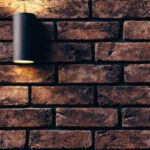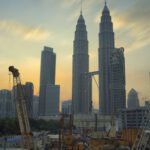The construction industry is one of the most dangerous industries to work in, with thousands of workers being killed or injured each year due to falls and other hazards. To reduce the risks of these potential workplace tragedies, safety harnesses have become an essential part of any construction site. Safety harnesses are designed to keep workers secure and safe from falls and other hazards by providing a secure anchor point for them to attach themselves to. In this article, we will discuss how safety harnesses can improve construction site safety.
What is a Safety Harness?
A safety harness is a piece of personal protective equipment (PPE) consisting of a series of straps, buckles, rings, and other components that are used to secure a worker to an anchor point. Safety harnesses can be used in a variety of different applications, but they are most commonly used in the construction industry to provide workers with a secure point of attachment when working at heights or in area where a fall may occur. Safety harnesses can provide a worker with a secure anchor point, help to prevent falls, and also provide a secure point of attachment for other pieces of equipment such as lanyards or fall protection systems.
Benefits of Using Safety Harnesses
Safety harnesses can provide a number of benefits to those working in the construction industry. The primary benefit of using safety harnesses is that they can help to reduce the risk of falls and other potential workplace hazards by providing a secure point of attachment for workers. Additionally, safety harnesses can improve comfort by providing a secure, comfortable fit for the worker, and can also help to reduce fatigue by taking some of the weight off of the worker’s body.
Safety harnesses can also help to reduce the risk of injury or death in the event of a fall. In the event of a fall, safety harnesses can help to limit the distance a worker falls, as well as reduce the impact of the fall by providing a secure point of attachment that will help to cushion the impact of the fall. Furthermore, safety harnesses can also help to improve safety by providing a secure point of attachment for workers to attach other pieces of equipment such as lanyards or fall protection systems.
Regulations and Standards for Safety Harnesses
Safety harnesses are subject to a number of different regulations and standards, depending on the country and region they are used in. In the United States, safety harnesses must meet the requirements of the Occupational Safety and Health Administration (OSHA), which requires that safety harnesses be properly inspected, maintained, and stored when not in use. Additionally, safety harnesses must also meet the requirements of the American National Standards Institute (ANSI), which sets standards for the design, construction, testing, and use of safety harnesses.
Conclusion
Safety harnesses are an essential piece of personal protective equipment for workers in the construction industry. By providing a secure point of attachment for workers, safety harnesses can help to reduce the risk of falls and other potential hazards, improve comfort, reduce fatigue, and provide a secure point of attachment for other pieces of equipment. Additionally, safety harnesses must also meet a number of regulations and standards in order to ensure that they are safe and effective to use. By using safety harnesses, workers can enjoy greater safety and security while working in the construction industry.






